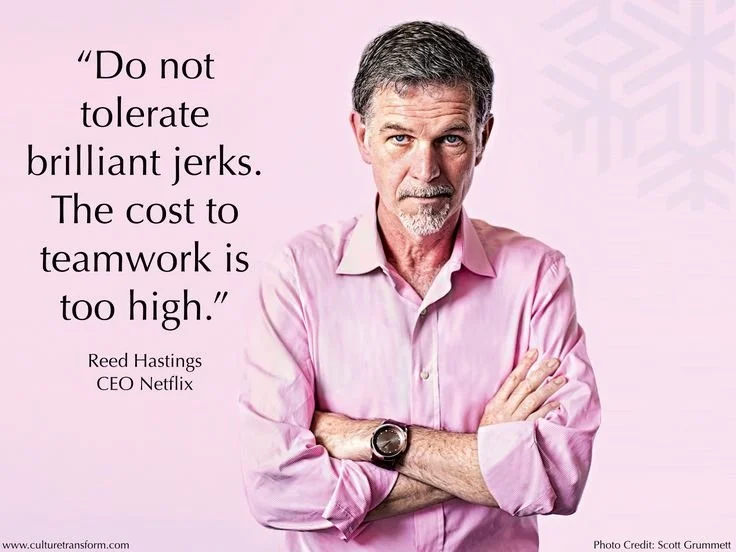I’ve long been fascinated by culture as the accelerant of business strategy. Or its ability to be a significant impediment.
In 2018, I wrote that culture is ultimately defined by the worst behaviour leaders are prepared to tolerate. Seven years later—amid AI disruption, layoffs, and mounting organizational strain—that truth hasn’t softened. If anything, it has intensified.
Here’s some basic truths I firmly believe are still true in 2025.
Everyday your culture votes on your strategy. With every decision they make and every decision they avoid.
Your culture is ultimately a manifestation of your humans - or as Stan Slap would say “your culture is where the humans gather in your organization.”
Beyond the academic texts, the expensive consultants and the numerous culture diagnostics, audits – and a billion miles from fruitless employee engagement surveys – one simple truth exists…
You can determine any culture by what it celebrates, what (and who) it promotes…and most distinctly, by what it tolerates. The sad truth is those three yardsticks work just as well for parenting and families too.
What you tolerate – and what you deliberately, or conveniently, ignore.
The “bad apple” stuff,
The “we’ll deal with it later” stuff,
The “its not that damaging really” stuff,
The “stop making a mountain outta molehill” stuff.
My good friend Sam Altman, or more likely the thousands of research reports, culture books and agony-filled blog posts that feed his LLM’s, threw this list of 50 out in under 10 seconds.
Take a gander.
Count off in your head the one’s you’re currently tolerating.
Reflect on the impact every single one of them has on the commitment, conviction, passion and dare I say it engagement of your humans.
And on your strategy.
Then ask yourself what’s it gonna take for you to STOP tolerating it.
Here goes…
Cultural & Leadership Blind Spots
Charisma and extrovertism aren’t always hallmarks of great leaders. Who doesn’t love a “double shooter” though.
1. Allowing leaders to micromanage even when it causes burnout and stifles innovation.
2. Protecting toxic high performers because they bring in revenue or have political capital.
3. Leadership by fear instead of by trust or inspiration.
4. Rewarding visibility over results (e.g., loudest person gets the credit).
5. Favoritism in promotions or opportunities, undermining fairness.
6. Punishing failure instead of learning from it, discouraging innovation.
7. Overvaluing charisma over competence in hiring/promotions.
8. Allowing leaders to ignore feedback with no consequences.
9. Tolerating “brilliant jerks” who alienate colleagues but are seen as irreplaceable.
10. Ignoring middle management burnout, even when they are pivotal to execution.
Communication Dysfunction
11. Meetings without agendas or outcomes.
12. The HIPPO effect – highest paid person’s opinion dominates all decisions.
13. Allowing passive-aggressive communication to go unchecked.
14. Avoiding difficult conversations leading to unresolved tension.
15. Email overload – expecting instant responses at all hours.
16. Unclear internal communication, leading to confusion and misalignment.
17. Punishing honesty when employees give critical feedback.
18. Leaders hoarding information, creating power imbalances.
19. Siloed departments that don’t collaborate due to turf wars.
20. Not listening to frontline employees, who often have the best insights.
Time & Resource Waste
21. Back-to-back meetings culture, leaving no time to think or execute.
A rather extreme attempt at cutting US government bureaucracy. The DOGE Chainsaw.
22. “Always-on” expectations, leading to exhaustion and high attrition.
23. Endless email chains instead of decisive action or quick syncs.
24. Duplicated work due to poor project coordination.
25. Chronic overstaffing of meetings, wasting people’s time.
26. Underutilizing internal talent, while over-relying on consultants.
27. Wasting resources on vanity projects, with no measurable ROI.
28. Obsolete processes maintained because “that’s how we’ve always done it.”
29. Tolerating bloated approval chains, killing agility.
30. Failing to sunset dead projects, draining resources for no gain.
Organizational Design Flaws
Another brilliant insight from Tom Fishburne. Source: https://marketoonist.com/2012/02/orgchart.html
31. Undefined or overlapping roles, creating confusion and conflict.
32. Overly complex org charts, leading to slow decision-making.
33. Flat structures in name only, with hidden hierarchies.
34. No clear accountability, causing finger-pointing when things go wrong.
35. Promoting based on tenure, not capability or potential.
36. Creating roles without clear purpose, just to keep people happy.
37. Using job titles as power symbols, fueling ego-driven behavior.
38. Poor onboarding processes, setting people up to fail.
39. Neglecting internal mobility, forcing people to leave to grow.
40. Treating contractors as second-class citizens, damaging team cohesion.
Strategy & Decision-Making Pitfalls
41. Chasing every new trend, without a coherent strategy. What I called the “Bright Shiny Object Syndrome”
42. Analysis paralysis – overanalyzing everything without taking action.
43. Setting unrealistic goals, then blaming teams for missing them.
44. Short-term thinking, driven by quarterly targets over sustainable success. Or, when you’re the dog and the 90-day analyst call is your tail 😊
45. Letting politics override logic in strategic decisions.
46. Not prioritizing or saying “no”, leading to constant overload.
47. Failing to measure what actually matters, just what’s easy.
48. Using KPIs as weapons, not tools for learning and improvement.
49. Ignoring competitors or market changes, staying in a bubble.
50. Rewarding risk-aversion, which kills innovation and growth.
Below, my favourite unambiguous quote from NetFlix leader Reed Hastings who, few would argue, has managed to create one of the most admired corporate cultures – and business success stories – of the past 30 years.
Open Season Dear Reader…if there’s a particular activity you’ve seen tolerated at your organization, drop it in the comments…I’ll be sure to add it as this list inevitably gets updated
Iconic leaders recognize the profound impact of tolerating toxic employee behaviours.






